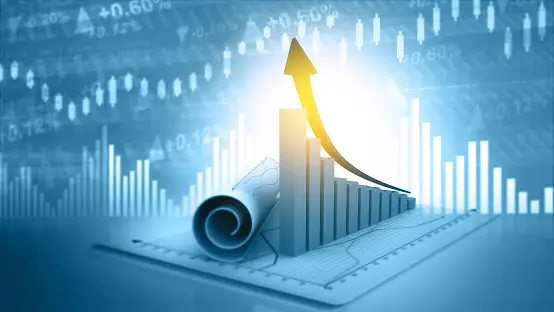The U.S. economy, often considered a barometer of global economic health, experienced a revision in its second-quarter GDP growth rate, which has been adjusted downward to 2.1%. This development raises questions about the factors that led to this adjustment and the potential repercussions for the overall economic outlook.
Understanding GDP Growth Rate:
Gross Domestic Product (GDP) growth rate is a critical economic indicator that measures the rate of expansion of a country’s economy over a specific period, usually a quarter or a year. It serves as a vital tool for assessing economic health, identifying trends, and making informed policy decisions. In the case of the U.S., the second-quarter GDP growth rate was initially estimated at a different figure, but a more comprehensive analysis has led to a revision.
Factors Behind the Revision:
Numerous factors can influence a country’s GDP growth rate, and revisions are not uncommon due to the complexities of measuring economic activities accurately. In the case of the recent U.S. revision, several elements might have contributed:
Consumer Spending: Consumer spending accounts for a significant portion of U.S. GDP. Any shifts in consumer behavior, influenced by factors like inflation, employment rates, and consumer confidence, can impact GDP growth.
Investment: Business investments, both in terms of capital expenditures and research and development, play a crucial role in GDP growth. Fluctuations in business sentiments can lead to variations in investment patterns.
Trade Balance: Exports and imports contribute to a country’s GDP. Changes in global trade dynamics, tariffs, and exchange rates can influence the trade balance and subsequently impact GDP growth.
Government Spending: Government expenditures on public services, infrastructure, and defense can contribute significantly to GDP growth. Variations in government spending levels can influence the overall growth rate.
External Shocks: Natural disasters, geopolitical events, and other unforeseen occurrences can have immediate impacts on economic activities, leading to revisions in GDP growth projections.
Implications and Economic Outlook:
The revision in the second-quarter GDP growth rate prompts a closer examination of the U.S. economy’s current state and future trajectory. While a 2.1% growth rate reflects expansion, the downward revision suggests a possible slowdown in the pace of growth.
Economists and policymakers will closely monitor subsequent economic data to assess whether the revision is an isolated event or part of a larger trend. Additionally, this revision might prompt discussions about potential policy adjustments to stimulate economic activity, if deemed necessary.
The downward revision of the U.S. second-quarter GDP growth rate to 2.1% serves as a reminder of the intricate nature of economic measurement and analysis. While the adjustment itself is significant, its long-term implications on the U.S. economy will depend on the interplay of various domestic and global factors. Monitoring subsequent economic indicators and trends will provide a clearer picture of whether this revision signifies a temporary setback or a more prolonged shift in economic growth patterns.












